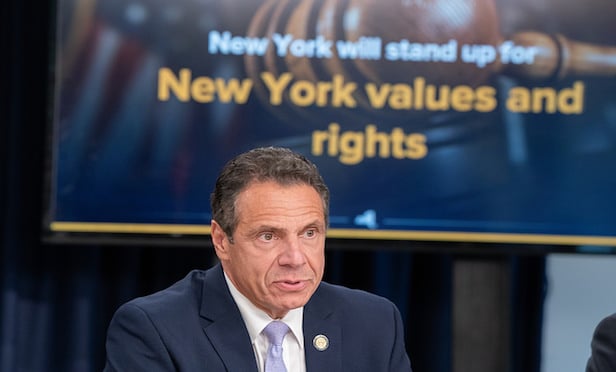PHILADELPHIA—Leaders of two of the largest office property REITs in the Philadelphia market say they are “keeping powder dry” and accumulating funds to ensure they have sufficient capital to withstand any downturn in the market over the next 18 to 24 months.
William Hankowsky, president, chairman and CEO of Liberty Property Trust, and Gerald Sweeney, president, CEO, and trustee, Brandywine Realty Trust, participated in a panel, “Where are the capital markets now and where are they going?” at the Urban Land Institute's Spring Conference, held here last week.
Noting that Liberty had made a decision to change its strategic direction several years ago, Hankowsky said sales of some $2.5 billion in non-core properties over the last several years, and expected sales between $900 million and $1.2 billion this year were funding its current activities.
“Right now we have about 30 projects under construction, just shy of nine million square feet,” he said. “It's about $1.6 billion across 24 markets in the United States.” Liberty relies on an $800 line of credit for its financing rather than traditional construction financing, Hankowsky said.
“That line goes up, and we sell some assets, the line comes down, it's pretty straightforward,” he said. “We never mortgage our assets. To the extent that we have debt on the balance sheet, it's unsecured corporate debt, which we find to be tremendously flexible.”
Brandywine also has been repositioning out of noncore assets, shedding about $2 billion in properties between 2014 and 2015.
“We actually prefunded a lot of our development pipeline,” said Sweeney. “In the last four quarters, we sold about $1.2 billion of assets and have about $800 million under construction today.” Sweeney says Brandywine has shifted from a concentration in suburban and “near-urban” office properties to one that is now almost exclusively urban, within Philadelphia's University City, Washington, DC, and Austin, TX.
In its joint venture development projects, Brandywine will use third-party debt, Sweeney says. “Typically we keep the equity funding ratios around 35-45 percent, and then use construction financing with a conversion to a mini-perm, because that tends to fit that model the best,” he says. “That provides us with a higher return on invested equity, and we also look at that in the context of our overall balance sheet.”
Brandywine has a $600 million line of credit with 20 different banks, says Sweeney, adding “and one of our objectives is to never have to draw on that. We haven't had a balance on that for four or five years, so right now we keep that powder dry to ensure adequate capital capacity.”
The beginning of 2016 was “highly volatile,” says Greta Guggenheim, CEO of TPG Real Estate Finance Trust. “We saw major regulations come in that affected the regulated lenders with the high velocity commercial real estate regulations and Basel III. We saw the mortgage REITs constrained because their prices had dropped and their dividend yields were so high, so those mortgage REITs were out of the market. Then the conduit lenders pretty much exited the market, they started to withdraw in the fourth quarter of last year. All of this is coinciding with this 'wall of maturities' that we've been hearing about. So the question is, who's going to be financing that?”
Guggenheim says currently, she is seeing more requests for construction and land loans from developers who can't self-fund. “It feels like there's the beginning of real stress in the system,” she says.
One bank particularly active in construction lending is Bank of the Ozarks, Guggenheim says. “They very much like doing construction loans and they finance nonbank lenders like us. There's just a few other specialty lenders, but unless you are a major public REIT or institutional owner, it is very difficult to get construction financing.”
Even though Liberty and Brandywine are using little bank financing, they believe banks would be ready and willing to work with them if the need arose.
“One of the things we learned in this business many times over is that memories are short, relationships are long,” says Sweeney. “From our perspective, even if we're not using a bank today that we've used before, we still try to cultivate that relationship. All of our businesses touch a lot of other businesses, so to that extent, we can refer banks to different clients or tenants.”
Brandywine has shrunk balance sheet debt from the high 40 percent range in the 2008 recession to the low 30s today, Sweeney says.
“I think what the financial crisis taught us was leverage precludes opportunities,” he says. “If we had more financial capacity, we could have bought back a lot of our debt at pretty good discounts.”
Hankowsky agrees. “I think the credit markets will be there for real estate in the future for those who have taken care of their balance sheet,” he says.
Connie Moore, most recently president and CEO of BRE Properties, San Francisco, moderated the panel.
PHILADELPHIA—Leaders of two of the largest office property REITs in the Philadelphia market say they are “keeping powder dry” and accumulating funds to ensure they have sufficient capital to withstand any downturn in the market over the next 18 to 24 months.
William Hankowsky, president, chairman and CEO of Liberty Property Trust, and Gerald Sweeney, president, CEO, and trustee, Brandywine Realty Trust, participated in a panel, “Where are the capital markets now and where are they going?” at the Urban Land Institute's Spring Conference, held here last week.
Noting that Liberty had made a decision to change its strategic direction several years ago, Hankowsky said sales of some $2.5 billion in non-core properties over the last several years, and expected sales between $900 million and $1.2 billion this year were funding its current activities.
“Right now we have about 30 projects under construction, just shy of nine million square feet,” he said. “It's about $1.6 billion across 24 markets in the United States.” Liberty relies on an $800 line of credit for its financing rather than traditional construction financing, Hankowsky said.
“That line goes up, and we sell some assets, the line comes down, it's pretty straightforward,” he said. “We never mortgage our assets. To the extent that we have debt on the balance sheet, it's unsecured corporate debt, which we find to be tremendously flexible.”
Brandywine also has been repositioning out of noncore assets, shedding about $2 billion in properties between 2014 and 2015.
“We actually prefunded a lot of our development pipeline,” said Sweeney. “In the last four quarters, we sold about $1.2 billion of assets and have about $800 million under construction today.” Sweeney says Brandywine has shifted from a concentration in suburban and “near-urban” office properties to one that is now almost exclusively urban, within Philadelphia's University City, Washington, DC, and Austin, TX.
In its joint venture development projects, Brandywine will use third-party debt, Sweeney says. “Typically we keep the equity funding ratios around 35-45 percent, and then use construction financing with a conversion to a mini-perm, because that tends to fit that model the best,” he says. “That provides us with a higher return on invested equity, and we also look at that in the context of our overall balance sheet.”
Brandywine has a $600 million line of credit with 20 different banks, says Sweeney, adding “and one of our objectives is to never have to draw on that. We haven't had a balance on that for four or five years, so right now we keep that powder dry to ensure adequate capital capacity.”
The beginning of 2016 was “highly volatile,” says Greta Guggenheim, CEO of TPG Real Estate Finance Trust. “We saw major regulations come in that affected the regulated lenders with the high velocity commercial real estate regulations and Basel III. We saw the mortgage REITs constrained because their prices had dropped and their dividend yields were so high, so those mortgage REITs were out of the market. Then the conduit lenders pretty much exited the market, they started to withdraw in the fourth quarter of last year. All of this is coinciding with this 'wall of maturities' that we've been hearing about. So the question is, who's going to be financing that?”
Guggenheim says currently, she is seeing more requests for construction and land loans from developers who can't self-fund. “It feels like there's the beginning of real stress in the system,” she says.
One bank particularly active in construction lending is Bank of the Ozarks, Guggenheim says. “They very much like doing construction loans and they finance nonbank lenders like us. There's just a few other specialty lenders, but unless you are a major public REIT or institutional owner, it is very difficult to get construction financing.”
Even though Liberty and Brandywine are using little bank financing, they believe banks would be ready and willing to work with them if the need arose.
“One of the things we learned in this business many times over is that memories are short, relationships are long,” says Sweeney. “From our perspective, even if we're not using a bank today that we've used before, we still try to cultivate that relationship. All of our businesses touch a lot of other businesses, so to that extent, we can refer banks to different clients or tenants.”
Brandywine has shrunk balance sheet debt from the high 40 percent range in the 2008 recession to the low 30s today, Sweeney says.
“I think what the financial crisis taught us was leverage precludes opportunities,” he says. “If we had more financial capacity, we could have bought back a lot of our debt at pretty good discounts.”
Hankowsky agrees. “I think the credit markets will be there for real estate in the future for those who have taken care of their balance sheet,” he says.
Connie Moore, most recently president and CEO of BRE Properties, San Francisco, moderated the panel.
Want to continue reading?
Become a Free ALM Digital Reader.
Once you are an ALM Digital Member, you’ll receive:
- Breaking commercial real estate news and analysis, on-site and via our newsletters and custom alerts
- Educational webcasts, white papers, and ebooks from industry thought leaders
- Critical coverage of the property casualty insurance and financial advisory markets on our other ALM sites, PropertyCasualty360 and ThinkAdvisor
Already have an account? Sign In Now
*May exclude premium content© 2024 ALM Global, LLC, All Rights Reserved. Request academic re-use from www.copyright.com. All other uses, submit a request to [email protected]. For more information visit Asset & Logo Licensing.









